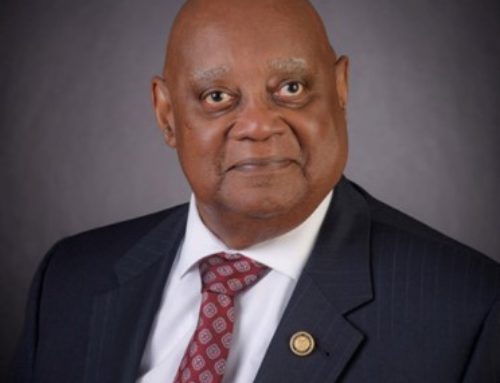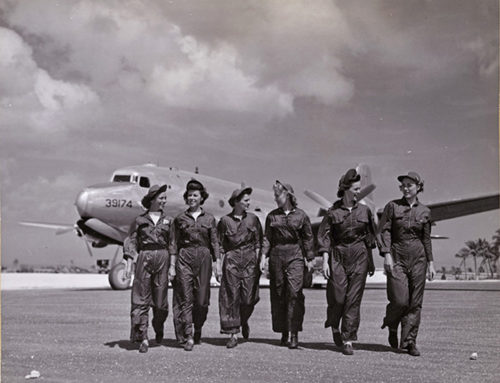“A ship in port is safe; but that is not what ships are built for. Sail out to sea and do new things.” – Grace Hopper
March is Women’s History Month and we would be remiss if we let it go by without talking about probably one of the greatest women to have served in the US Navy. Grace Murray Hopper not only changed how computers worked in the Navy, but how they were used in general. For her amazing work in computer science as well as her position as a rear admiral, she is sometimes referred to as “Amazing Grace”
Grace Murray was born on December 9, 1906 in New York. She graduated from Vassar in 1928 and earned an MA and PHD from Yale University. In 1943 she entered the US Naval Reserve and attended the UNSR Midshipman’s School-W at Northampton, Massachusetts. Originally, Hopper was turned away from joining the military because her weight was too light for her height. The military also believed that her work on mathematics at Vassar at the time was too important to abandon. She fought to join and was successfully given a waiver to attend training in Massachusetts. At 37 years old, she was one of the oldest recruits. Despite her age and weight, Hopper achieved the highest training rank- battalion commander- and graduated first in her class in June 1944. Her first assignment was at the Bureau of Ordinance Computation Project at Harvard.
It would be here that she first learned to program a computer –The Mark I. The Harvard Mark I was the first fully functional computer and the brainchild of electrical engineer and physicist Howard Aiken. IBM funded his research and he compiled a team which included Grace.
The Mark I computer was a whopping 55 feet long and eight feet high. The five-ton device contained over 760,000 separate pieces. The U.S. Navy used the computer for gunnery and ballistic calculations and was in operation until 1959. The computer used pre-punched tape and could carry out addition, subtraction, multiplication, and division. It could also reference previous results and had subroutines for logarithms and trigonometric functions. All of its output was displayed on an electric typewriter. Hopper is responsible for coining the term “bug” to describe a computer fault while working on the Mark I. The original “bug” was a moth that had caused a hardware fault which Hopper got rid of, thus becoming the first person to “debug” a computer. In 1946 she joined the Harvard Faculty as a Research fellow and would continue working on the Mark I and Mark II computers for the Navy. While working on the Mark systems she would help develop Flow-Matic, the first English-language data processing complier.

Figure 2 Grace Murray Hopper (seated, second from right) and Howard Aiken (seated, center), along with other members of the Bureau of Ordnance Computation Project, in front of the Harvard Mark I at Harvard University in 1944. U.S. Department of Defense.
In 1949, Hopper joined the Eckert-Mauchly Computer Corporation in Philadelphia as a Senior Mathematician. The corporation was building the UNIVAC I, the first commercial large-scale electronic computer. She would serve as the company’s Staff Scientist, Systems Programming until her retirement from the company in 1971 while on military leave. In 1959, Grace was asked to serve on a committee which would later develop the programming language COBOL (Common Business-Oriented Language) which is still used in order-processing business software today. While working on the UNIVAC I, Hopper would serve as the director of the Navy Programming Languages Group and was promoted to Captain in 1973. Amid all her technological accomplishments, Hopper tried to retire from the Naval Reserve twice, first in 1966 and again in 1971. Both times she was recalled to active duty indefinitely. In 1966, she was recalled to work at the Pentagon to upgrade COBOL. Versions of COBOL were having issues running on different computers. Hopper was responsible for bringing together all the incompatible strands to ensure that the language would be able to be used on multiple platforms. She did this by issuing a certifier. A certifier was a program that tested any version of COBOL and then made sure that it was truly compatible with all computers. In 1983, she was promoted to Commodore, a title that was later renamed to Rear Admiral, lower half.

Figure 3 Grace Hopper, age 76, is promoted to Commodore at the White House in 1983. President Ronald Reagan looks on. Her rank was reassigned in 1985 to Rear Admiral
She would finally retire in 1986 at the age of 80. Upon her retirement, she was the oldest active-duty commissioned officer in the U.S. Navy. She would receive the Defense Distinguished Service Medal, the highest non-combat award possible by the Department of Defense.
During her career, Grace Hopper was awarded 40 honorary degrees from universities around the world, and awarded numerous honors. Among her many accolades, Hopper was the first winner of “Computer Science Man of the Year” in 1969. She was also honored as the Distinguished Fellow of the British Computer Society in 1973, and then later became the first woman to receive the National Medal of Technology as an individual in 1991. Hopper’s role in computer science forever changed the field. She also serves as an inspiration to women working in a variety of STEM fields today. Upon her death in 1992, she was laid to rest with full military honors in Arlington National Cemetery. In 1997, the Navy commissioned a guided-missile destroyer to be named USS Hopper. Her legacy lives on not just in the computer science world or the Navy. Grace Hopper believed that her greatest accomplishment was the training she gave to the younger generations. “The most important thing I’ve accomplished, other than building the compiler, is training young people. They come to me, you know, and say, ‘Do you think we can do this?’ I say ‘Try it’ and I back them up.” Grace Hopper told writer Lynn Gilbert in 1981.






